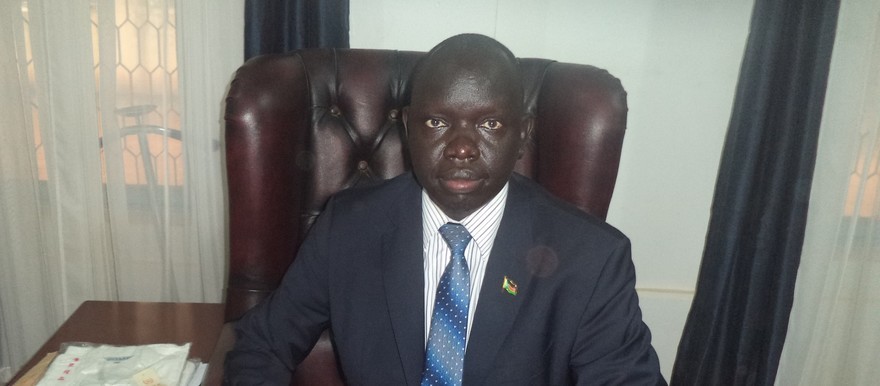News feature article on Radio Tamazuj, published on 27 December 2020, with title, “Communities in Aweil Reject Male Midwives,” just caught my attention with much interest. The complaints voiced by some community members against the introduction of male midwifery professionals is not new and surprising to me as a former State Minister of health in Northern Bahr El Ghazal State (NBG), who was involved in the implementation of the National Ministry of Health (MOH) Policy Framework 2013-2016.
Let me start by saying that the ultimate objective for midwifery programming is to reduce the highest rate of maternal mortality rates. Hence, this is the context in which the training of midwifery in Aweil and other Health Science Institutes across South Sudan work. For example, “South Sudan has one of the highest maternal mortality rates (MMR) in the world, estimated at 2054/100,000 live births. Although 46.7%5 of pregnant women attend at least one antenatal clinic (ANC) visit, skilled health professionals attend only 14.7% of deliveries” (MOH 2013/2016 policy Framework).
The main objectives for training midwifery are as follows:
- To increase the utilization and quality of health services, with emphasis on maternal and child health.
- To scale up health promotion and protection interventions so as to empower communities to take charge of their health.
- To strengthen institutional functioning including governance and health system effectiveness and efficiency.
And the following are priority areas:
1. Adequate human resource for health (HRH), which is the greatest asset of the health system (training, recruitment, the motivation of the adequate number of the right skill mix, right support). Human resource is a cornerstone for efficient health service delivery.
2. Improve accessibility of health services for the population by providing additional health infrastructures (Primary Health Care Centers (PHCCs), Primary Health Care Units (PHCUs), hospitals) and reactivating nonfunctional health facilities. The latter cannot be achieved in absence of HRH.
South Sudan faced a severe shortage of health workers in number and skills. Most health facilities are run by Community Health Workers (CHWs). The issue of staff shortage is noted as a priority both in the Health Sector Development Plan and State Strategic plan. During study undertaken in 2013/2014, the accessibility to health facilities by the population is estimated to be at 7.8%. This shows that most of our people have no access to health services. It was our goal to ensure that at least 50% of the population access health services by increasing the training of healthcare workers.
It was established that reducing maternal and under-five mortality is a priority area so that we achieve MDG 4 and 5. In 2013/2014, the state Maternal Mortality rate is 2182/100,000 deliveries, and Under-five mortality rate is 165/1000 live births. Both these indicators were highest in NBG state and the aim is to reduce by 20% over three years’ period.
The following were the key activities and achievements of State Ministry of Health (SMOH) 2014– 2015, financial year:
1. In order to address human resource shortages and skills gaps at the healthcare facilities, 100 staff were recruited for the state of which 43 were posted to Aweil state hospital. Additional 500 health workers were recruited under the UK Department for International Development (DFID) funded Health Pooled Fund (HPF) and 65 staffs were promoted to different functional grades.
2. 45 students were accepted in various health science institutes across the country and 13 students were sent to Caribbean Island to study medicine at St. George University. A total of 140 students were enrolled to study for clinical medicine, nursing and midwifery in Aweil Health Science Institute and 5 students from Aweil East were sponsored for a long term diploma training in midwifery and nursing.
3. However the SMOH is faced with cultural barrier challenges. SMOH was not able to enrol adequate qualify female into the midwifery Diploma program because the parents are not willing to allow their daughters to long term training program. The SMOH was left with no choice but to enrol the good number of young men and few women into the midwifery program. The training program, designed to provide save deliveries is not appreciated by the traditional birth attendants (TBA) women who felt to have been left redundant as a result of the midwifery development program. After noting this, the SMOH was planning to develop an exit strategy for the TBA so that doesn’t feel ignored. I hope the State government will implement this strategy to ensure that the role played by the TBA in absent of the professional midwives is appreciated.
Mr Tong Deng Anei is a former minister of health in Northern Bahr El Ghazal State (NBG). He can be reached via anei.tong@gmail.com
The views expressed in ‘opinion’ articles published by Radio Tamazuj are solely those of the writer. The veracity of any claims made are the responsibility of the author, not Radio Tamazuj.




